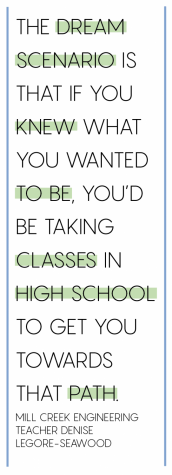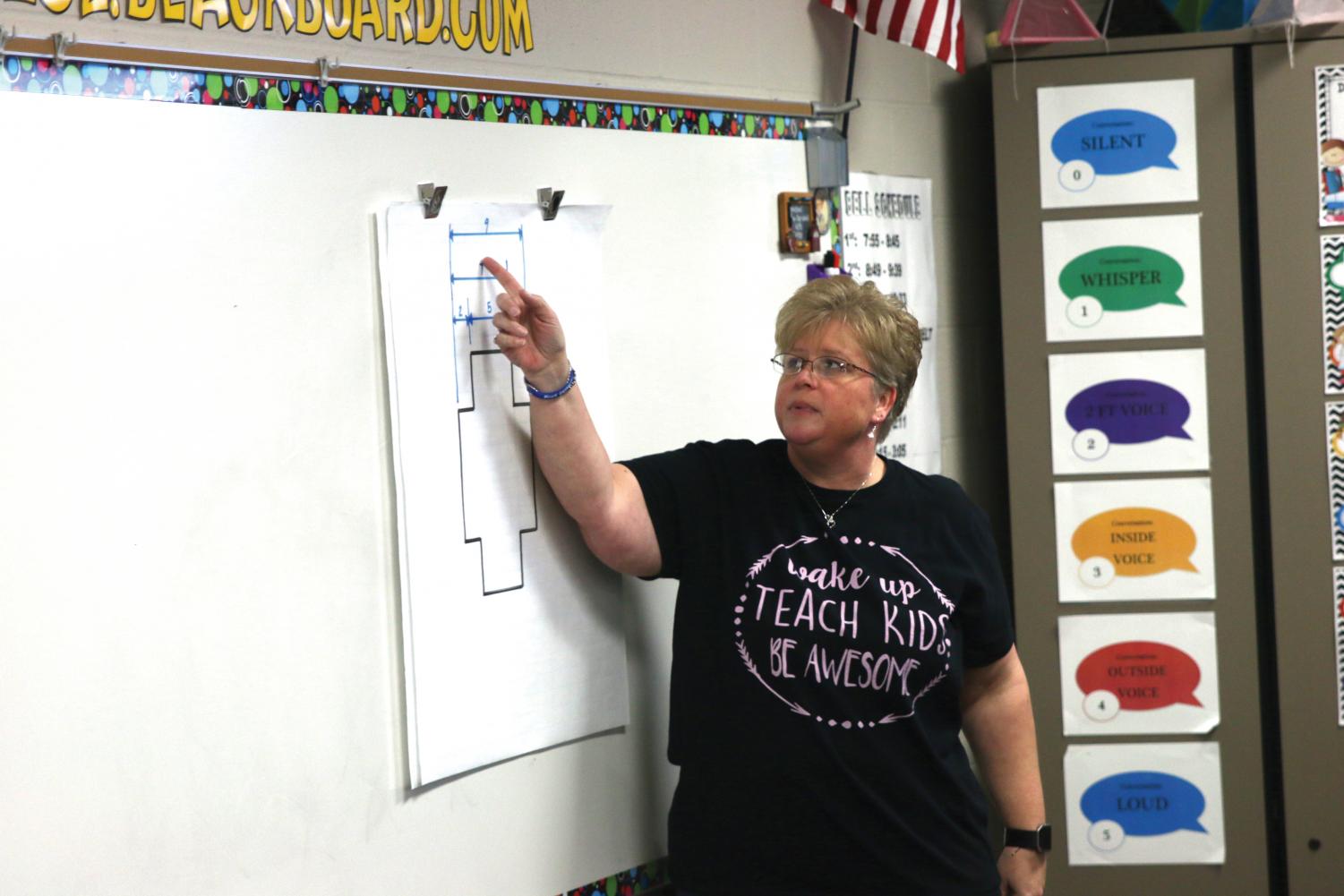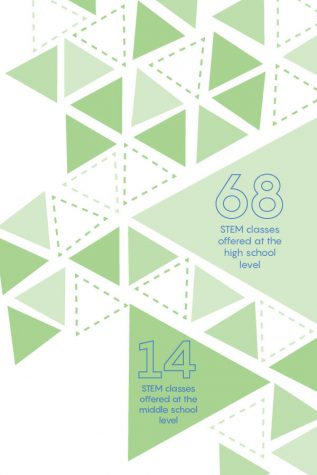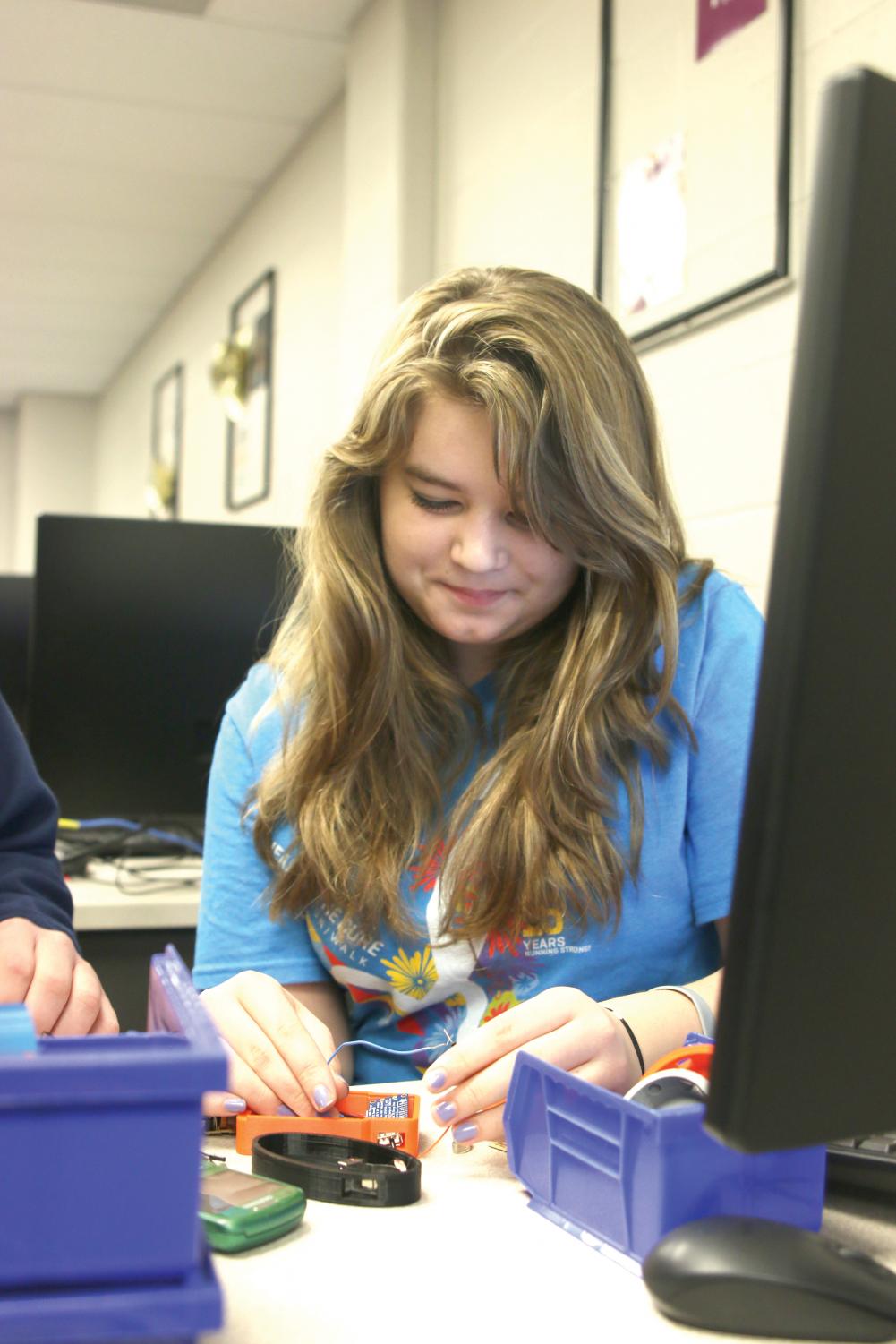District-wide
District offers multiple pathways to pursue STEM from elementary through high school
February 17, 2018
If there is one word to describe the climate of Mill Creek Middle School engineering/technology classroom, it would be “crazy.” Engineering teacher Denise Legore-Seawood uses the word herself, and on the afternoon of Friday, Jan. 19, that description is fitting. There are 32 eighth grade students, 11 of which are girls, beginning a project focused on architecture and drafting. Throughout the room are positive affirmations encouraging confidence, and Legore-Seawood wears a t-shirt with a simple mantra: “Wake up, teach kids, be awesome.”

On the board is a large piece of graph paper with a shape and dimensions on it, and Legore-Seawood is directing her students the correct way to copy the drawing. One student from the center table asks about the arrows on the end of the dimension lines, creating a loud discussion between the students which ends in applause as they find the answer. By the time the bell rings for the end of the 45-minute class, one boy pleads “Please let me stay.”
Legore-Seawood’s classes are in the middle between the basic computer classes of the elementary schools and the engineering pathways of the high schools. Her classes range from the principles of flight and aviation to bioremediation. Her eighth grade classes, however, study architecture and engineering concepts in order to provide a foundation for high school curriculum. Despite the hyper-energetic atmosphere of the room and the loud chatter of students, Legore-Seawood loves her job.
“Why would you not teach this class?” Legore-Seawood said. “I get to play with airplanes. I get to build rockets. I get to cut things on power tools. I get to draw on paper … I have the greatest job ever.”
Between drafting on computers to graphing measurements, Legore-Seawood’s class is the epitome of STEM curriculum, yet she emphasizes the importance of the soft skills her class utilizes.
“This is about lighting the fire,” Legore-Seawood said. “It’s community building, it’s how you work together in a cooperative group, it’s communication, it’s team-building, it’s sharing, it’s problem solving, it’s being creative, [and] it’s ways to do those things.”

During seventh hour on Friday, Jan. 19, Mill Creek Engineering teacher Denise Legore-Seawood explains the importance of drafting.
This goes hand-in-hand with the technology standards implemented by the district. According to district Career and Technical Education Coordinator Cindy Swartz, technology education “can assist with student engagement, creativity, critical thinking, communication, collaboration, and innovation.”
Legore-Seawood’s class has been continually adjusting to coordinate with the engineering and technology curriculum taught at the high school level.
“Everything is changing because the state is changing, so we’re looking at individual pathways,” Legore-Seawood said. “The dream scenario is that if you knew what you wanted to be, you’d be taking classes in high school to get you towards that path.”

That path can vary between high schools, though. While some STEM courses are only offered at certain schools, such as Zoology here and AP Computer Science at DHS, the district’s goal is “to use our resources efficiently to ensure that students have great learning opportunities, regardless of which school they attend,” according to district Director of Teaching and Learning Joe Kelly.
“In the state of Kansas, there is a new movement to include Individual Plans of Study (IPS), which helps students make decisions about their education based on career interests and goals,” Kelly said. “Staff members are continuing to look at ways in which we can identify a student’s interest in STEM fields and encourage the exploration of STEM possibilities through the Individual Plan of Study.”
STEM education is also integrated into the elementary schools. According to Horizon Elementary technology teacher Sarah Midiros, students focus on “basic computer skills such as typing, learning how to use a Word document, and creating PowerPoint presentations,” alongside skills such as coding, 3D printing, and video game design.
“If you think about it, STEM is invading our students’ world as they know it,” Midiros said. “It is imperative we effectively teach students critical thinking skills as well as let them create, have the opportunity to fail and troubleshoot to achieve an end goal.”
Even teachers here are incorporating new district standards into their classes. Technology teacher Helga Brown said that over the last few years, the district has shifted their focus from simply learning engineering concepts to more engaging curriculum that will effectively help students more later in life.
“The district is embracing the whole Common Core for more applied math, applied science, applied technology, so not like learning keyboarding for the sake of learning keyboarding, but learning how to use the computer as a tool,” Brown said.

During Engineering Design & Development on Thursday Jan. 25, senior Maggie Miller works on a prototype for her belt clip.
Brown explains how the state’s changing standards for her classes have shifted to a computer-based curriculum, specifically in her Drafting/CAD class.
“Five years ago, when I was teaching drafting … we had to teach them how to letter. It’s a big deal, and we would spend two or three weeks on learning how to letter,” Brown said. “So we completely dropped lettering, which opened up the opportunity to get that 3D modeling in there. No longer were we teaching three weeks of lettering and spending half a year drawing on paper, we were doing quick, basic skills you need for sketching, then right into CAD.”
Brown said the evolution into a computer-based class is a positive change, especially the addition of the free drafting program Revit, and is excited to see where her classes will go in the future.
“I love that it’s evolving,” Brown said. “I love that like three years ago, we implemented Revit and I’ve been running with it since. And most of it is self taught, just jumping in and figuring out how to use it, and the kids like it.”